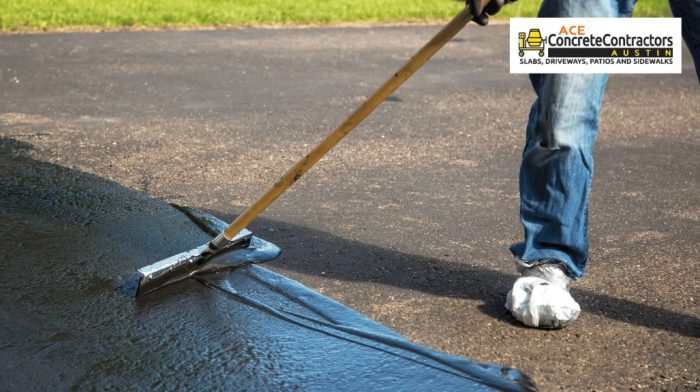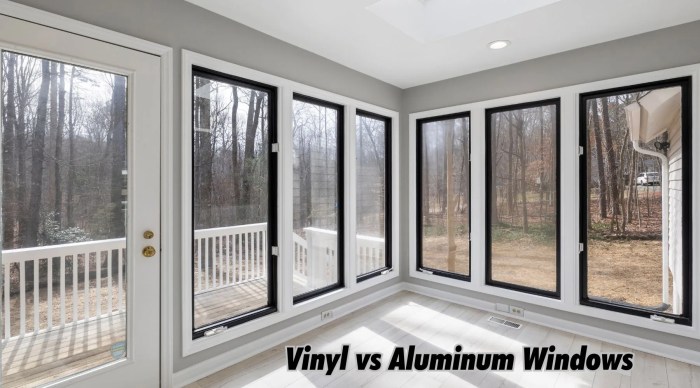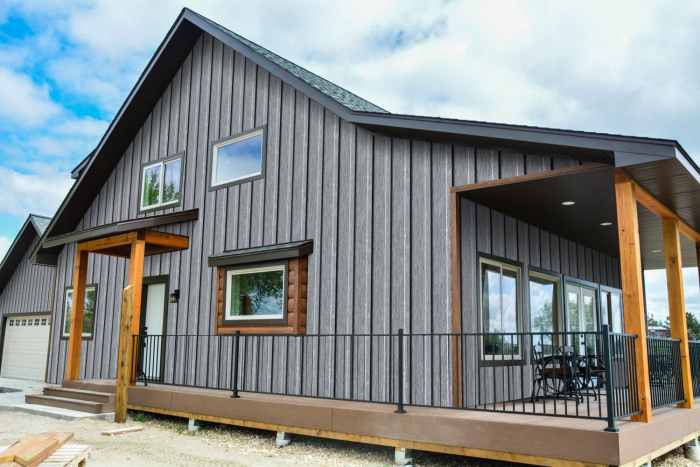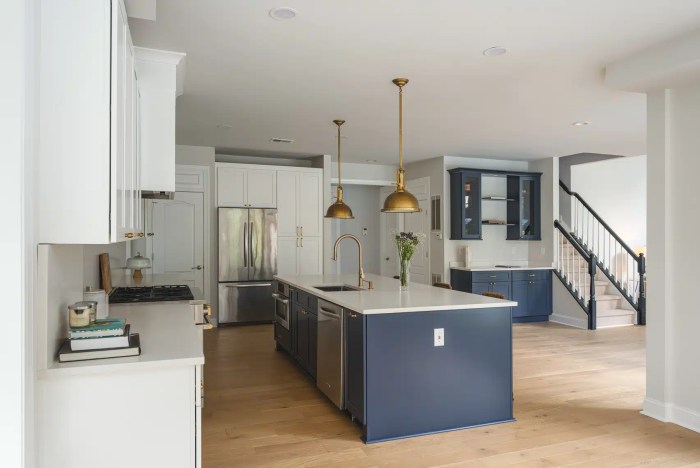Explore the world of home renovation financing with this detailed guide on the best options available. From personal loans to HELOCs, uncover the key factors to consider and the pros and cons of each choice. Get ready to make informed decisions for your next home improvement project.
Best Home Renovation Financing Options
When it comes to renovating your home, choosing the right financing option is crucial to ensure a smooth and successful project. Here, we will explore the various financing options available and discuss the key factors to consider when making your decision.
Personal Loans
Personal loans are a popular choice for financing home renovations as they offer a lump sum amount that can be used for any purpose. These loans typically have fixed interest rates and repayment terms, making it easier to budget for your project.
- Advantages:
- Quick approval process
- No collateral required
- Fixed interest rates
- Disadvantages:
- Higher interest rates compared to secured loans
- Strict eligibility criteria
Home Equity Loans
Home equity loans allow homeowners to borrow against the equity in their home. This type of loan typically offers lower interest rates than personal loans, as it is secured by the value of the property.
- Advantages:
- Lower interest rates
- Potentially tax-deductible interest
- Lump sum payment
- Disadvantages:
- Requires equity in your home
- Longer approval process
- Risk of losing your home if you default on the loan
HELOCs (Home Equity Line of Credit)
A HELOC is a revolving line of credit that allows homeowners to borrow against the equity in their home as needed. This flexibility can be beneficial for ongoing renovation projects or unpredictable expenses.
- Advantages:
- Flexibility to borrow as needed
- Lower interest rates compared to credit cards
- Interest is only charged on the amount borrowed
- Disadvantages:
- Variable interest rates
- Requires equity in your home
- Risk of foreclosure if you default on the loan
Credit Cards
Using credit cards for home renovations can be convenient, especially for smaller projects or immediate expenses. However, credit cards often come with higher interest rates and may not be suitable for larger renovation budgets.
- Advantages:
- Convenience and quick access to funds
- Rewards or cashback benefits
- No need for collateral
- Disadvantages:
- Higher interest rates
- Limited credit limits
- Minimum monthly payments can add up quickly
Personal Loans
When it comes to financing home renovations, personal loans can be a popular choice for homeowners looking for flexibility and quick access to funds.
How Personal Loans Work for Home Renovations
- Personal loans are unsecured loans that can be used for various purposes, including home renovations.
- Borrowers receive a lump sum amount upfront, which they can then use to cover the costs of their renovation project.
- Repayment terms for personal loans typically range from 1 to 7 years, depending on the lender and the borrower's creditworthiness.
Interest Rates and Repayment Terms
- Interest rates on personal loans for home renovations can vary based on the borrower's credit score, loan amount, and repayment term.
- Typically, interest rates for personal loans range from 6% to 36%, with the average rate falling around 11% to 12%.
- Repayment terms can be flexible, with some lenders offering terms up to 7 years, allowing borrowers to spread out their payments.
Application Process
- To apply for a personal loan for home renovations, borrowers will need to submit an application with personal and financial information.
- Lenders will review the application and may require additional documentation, such as proof of income and identification.
- Once approved, borrowers receive the funds in a lump sum, which they can then use to finance their renovation project.
Qualifying for the Best Rates
- To qualify for the best personal loan rates for home renovations, borrowers should have a good credit score, stable income, and a low debt-to-income ratio.
- Shopping around and comparing offers from multiple lenders can help borrowers find the most competitive rates and terms for their personal loan.
- Some lenders may also offer discounts on interest rates for borrowers with a strong credit history or who opt for automatic payments.
Home Equity Loans
Home equity loans are a type of loan where homeowners can borrow against the equity in their home. This means that the loan is secured by the value of the home itself, making it a less risky option for lenders.
Differences Between Home Equity Loan and HELOC
A home equity loan is a lump sum of money that is repaid over a fixed term, typically with a fixed interest rate. On the other hand, a home equity line of credit (HELOC) allows homeowners to borrow money as needed, similar to a credit card, with a variable interest rate.
Risks Associated with Using Home Equity Loans
- One risk of using a home equity loan for renovations is that if you fail to make payments, you could risk losing your home through foreclosure.
- Another risk is that taking out a home equity loan could increase your overall debt burden, potentially leading to financial strain.
When Home Equity Loan May Be the Best Financing Option
- If you have a significant amount of equity in your home and need a large sum of money for renovations, a home equity loan could be a good option.
- Home equity loans may also be a good choice if you prefer a fixed interest rate and predictable monthly payments.
HELOCs (Home Equity Line of Credit)
A Home Equity Line of Credit (HELOC) is a revolving line of credit that allows homeowners to borrow against the equity in their property. One of the main benefits of a HELOC for home renovations is that it typically offers lower interest rates compared to other forms of financing, such as personal loans.
Process of Obtaining a HELOC and Accessing Funds for Renovations
Obtaining a HELOC involves applying with a lender, who will assess the value of your home and your creditworthiness. Once approved, you can access funds up to a certain limit, usually over a period of several years. To use the funds for renovations, you can simply write a check or transfer money from your HELOC account.
Flexibility of a HELOC Compared to Other Financing Options
- HELOCs offer flexibility in terms of borrowing, as you can access funds as needed up to your approved limit.
- Interest is only charged on the amount you withdraw, unlike a home equity loan where you receive a lump sum upfront.
- HELOCs often have variable interest rates, which can be both an advantage and a disadvantage depending on market conditions.
Tips on Managing a HELOC Responsibly for Home Improvements
- Only borrow what you need for your renovations to avoid excessive debt.
- Make sure to budget and plan your renovation project carefully to avoid overspending.
- Stay on top of your payments to avoid defaulting on your HELOC, which could result in losing your home.
- Consider using a HELOC for projects that will increase the value of your home, such as kitchen or bathroom renovations.
Credit Cards

Using credit cards for home renovation financing can be a convenient option for homeowners looking to fund their projects. However, there are both advantages and disadvantages to consider when using credit cards for renovations.
Advantages and Disadvantages
- Advantages:
- Convenience: Credit cards offer quick access to funds for immediate renovation needs.
- Rewards: Some credit cards offer cash back or travel rewards for every dollar spent on home improvement expenses.
- Disadvantages:
- High-interest rates: Credit cards typically come with high-interest rates, leading to potential debt accumulation if not paid off quickly.
- Credit score impact: Utilizing a large portion of your credit limit can negatively impact your credit score.
Maximizing Credit Card Rewards
- Choose a rewards credit card that offers bonus points or cash back for home improvement purchases.
- Take advantage of promotional offers and bonus categories to maximize rewards on renovation expenses.
Avoiding High-Interest Debt
- Pay off the balance in full each month to avoid accruing interest charges.
- Avoid carrying a high balance on your credit card to prevent long-term debt accumulation.
Final Conclusion
In conclusion, navigating the realm of home renovation financing doesn't have to be daunting. Armed with the knowledge from this guide, you can confidently choose the best option to bring your renovation dreams to life. Make wise financial decisions and watch your home transform before your eyes.
Quick FAQs
What factors should I consider when choosing a financing option?
Consider your credit score, interest rates, repayment terms, and overall financial goals.
How can I qualify for the best personal loan rates?
To qualify for the best rates, maintain a good credit score, stable income, and low debt-to-income ratio.
What are the risks of using a home equity loan for renovations?
Risks include the potential of losing your home if you default on the loan and higher interest rates compared to other financing options.
How can I maximize credit card rewards for home improvements?
Look for credit cards with rewards programs tailored to home improvement purchases and pay off the balance in full each month to avoid interest charges.







